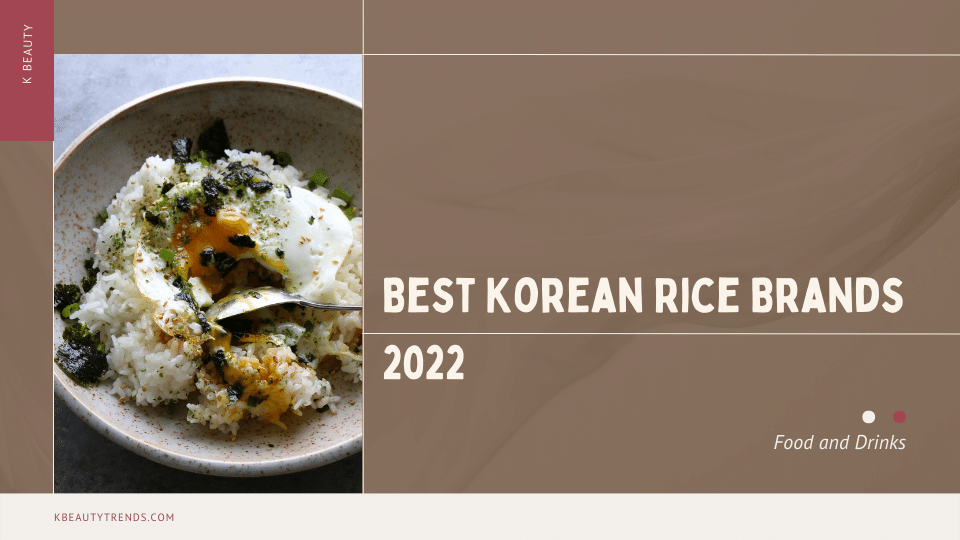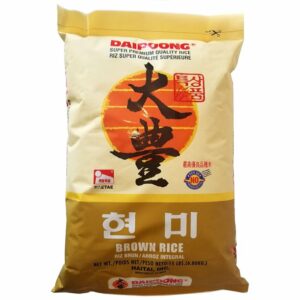Korean rice brands are some of the most popular in the world and are known for their quality and variety.
There are many Korean rice brands to choose from, each with its unique flavor and texture. Whether you prefer sticky or chewy rice, there’s a Korean brand that will suit your taste.

Table of Contents
Why Korean rice is so popular
Korean rice is so popular because of its unique flavor and nutritional value. Korean rice has a slightly sweet taste that many love, and it is also known for being very sticky and easy to eat. Additionally, Korean rice contains nutrients like vitamin B1, iron, and potassium and is also a good source of fiber and protein.
One of the main reasons why Korean rice is so popular is because it is incredibly versatile and can be used in various dishes, from stews and soups to stir-fries and even desserts. Additionally, Korean rice is very easy to cook, making it an excellent option for busy people who don’t have much time to spend in the kitchen.
Korean rice is a great choice if you’re looking for a delicious and healthy rice option. Give it a try today and see why so many people love it!
The different types of Korean rice.
Korean cuisine is renowned for its rice dishes, and a variety of different types of rice can be used in these recipes. Short-grain rice is the most common type of rice used in Korean cuisine, as it has a sticky texture that is ideal for making traditional dishes like Bibimbap and kimchi fried rice. Long-grain rice is also used occasionally in Korean cuisine, but it is typically reserved for more Westernized dishes like rice bowls and stir-fries.
A few different types of short-grain rice are commonly used in Korean cuisine. The most popular type of short-grain rice is called “japonica,” a variety of rice that is often used in sushi. Japonica rice has a sticky texture that helps it stick together when cooked, making it ideal for dishes like Bibimbap, where the rice needs to be evenly distributed. Another type of short-grain rice commonly used in Korean cuisine is “glutinous” rice, a variety of rice that is even more sticky than japonica rice. Glutinous rice is often used in desserts and other sweet dishes, as its sticky texture helps to hold together ingredients like fruits and nuts.
Long-grain rice is not as commonly used in Korean cuisine as short-grain rice, but it can use in certain dishes. Long-grain rice has a less sticky texture than short-grain rice, so it is not as well suited for dishes where the rice needs to stick together. However, long-grain rice can be a good option for dishes like rice bowls and stir-fries, where the rice will be mixed with other ingredients and does not need to stick together.
When cooking Korean rice dishes, it is important to use the correct type of rice for the dish that you are making. Short-grain rice is the best type of rice for most traditional Korean dishes, while long-grain rice can be a good option for more Westernized dishes. Be sure to experiment with different types of rice to find the one that works best for the dish that you are making.
The best Korean rice brands to try
There are a lot of good Korean rice brands to choose from, but my top three picks would have to be Rhee Chun, Nishiki, and CJ Instant Rice. They all offer high-quality rice grown in ideal conditions with a delicious flavor and texture. So if you’re looking for some great Korean rice to try, I recommend giving any of these brands a go.

How to cook perfect Korean rice.
Korean rice is a staple in many Korean households, and it is simple to cook and can be enjoyed with many different dishes. Here are some tips on how to cook perfect Korean rice.
- Rinse the rice several times before cooking, removing any impurities and making the rice more fluffy.
- Soak the rice for 30 minutes before cooking, which will help soften the grains and make them more cooked.
- Use 1 cup of rice to 2 cups of water to ensure that the rice is cooked properly and is not too dry or too wet.
- Bring the water to a boil before adding the rice; this method will help cook the rice evenly.
- Once the rice is cooked, let it sit for 10 minutes before serving. It will allow the flavors to meld and the rice to absorb any excess water.
With these tips, you can cook perfect Korean rice every time!
Tips for storing Korean rice cake.
Korean rice cakes, or “Tteok,” are a popular and delicious treat that can be enjoyed year-round. They come in many different shapes and sizes and can make with different ingredients like beans, nuts, and fruits. While they’re relatively easy to find in Korean supermarkets, Korean rice cakes can also make at home.
If you’re looking to store Tteok for longer, you should keep a few things in mind. First, Tteok should store in an airtight container in a cool, dry place. If you’re storing them in the fridge, wrap them tightly, so they don’t dry out. Tteok can also be frozen, but they may become slightly harder and less chewy after defrosting.
When it comes to enjoying Tteok, the possibilities are endless. They can eat plain or served with various dipping sauces, and Tteok can also be used in sweet or savory dishes or grilled or fried. No matter how you enjoy them, Tteok is a delicious and fun way to add a little something special to your meals.
Is Korean rice healthy?
Yes, Korean rice is healthy. Rice is a complex carbohydrate that provides energy and other essential nutrients to the body. It also contains thiamin, niacin, and vitamin B6, which are all important for maintaining overall health. Additionally, rice is a good source of fiber, providing approximately 1 gram per cup, and fiber is important for bowel regularity and overall gut health. Finally, rice is gluten-free and can enjoy by people with gluten sensitivities or allergies.
Why is Korean rice purple?
This question that we get asked quite often! The simple answer is that Korean rice is not purple – the color is due to a natural pigment called anthocyanin, which is found in certain types of rice. Anthocyanin is what gives blueberries their blue color and grapes their purple hue.
Interestingly, this same pigment can also be found in other grains, such as sorghum and maize. Several varieties of “purple rice” are cultivated worldwide – including in the United States, China, and Italy. Purple rice has been called “Black Rice” or “Forbidden Rice” in some cultures due to its rarity and nutrient-rich properties.
So there you have it – the next time someone asks you why Korean rice is purple, you can give them a little history lesson!
Does Korean eat rice?
Yes, Koreans eat rice. Rice is a staple in Korean cuisine, and rice is usually served with dishes like kimchi (spicy fermented cabbage) and bulgogi (marinated beef), although it can also be eaten plain.
Korean meals are typically served with several side dishes (banchan), and rice is often the main carb component. I love to eat rice with pickled radish or Namul (a vegetarian side dish made with greens). It’s a delicious and simple way to enjoy a healthy meal!
What are the best Korean brown rice brands?
There are many factors to consider when choosing a brown rice brand, including taste, texture, and nutrition. Some of the best Korean brown rice brands include SANMARU, Nurungji, and Haitai Daipoong Brown Rice.
Haitai Daipoong Brown Rice

Looking for an easy and fun way to make your rice wine at home? Look no further than Haitai Daipoong Brown Rice! This traditional Korean liquor is made with only water, rice flour, and rice wine and can be ready to drink in just one day. Simply mix the powder with water and let it mature, and you’ll have a delicious batch of rice wine that’s perfect for sharing with friends. So bring some excitement to your next get-together and try Haitai Daipoong Brown Rice today!
When it comes to taste, each person has their preferences. Some people prefer a nuttier flavor, while others prefer a sweeter or more savory taste. And texture. The texture is important because it affects how the rice feels in your mouth. Some people like their rice to be light and fluffy, while others prefer it to be more dense and chewy.
Regarding nutrition, brown rice is generally considered healthier than white rice since it contains more fiber and nutrients. However, some brands of brown rice may be more nutritious than others.
Conclusion
The article provides an overview of rice, including its history, nutritional value, and benefits. It also discusses how to choose a brand of brown rice and why brown rice is considered healthier than white rice. What is your opinion on the health benefits of brown rice?


